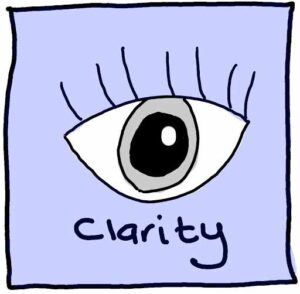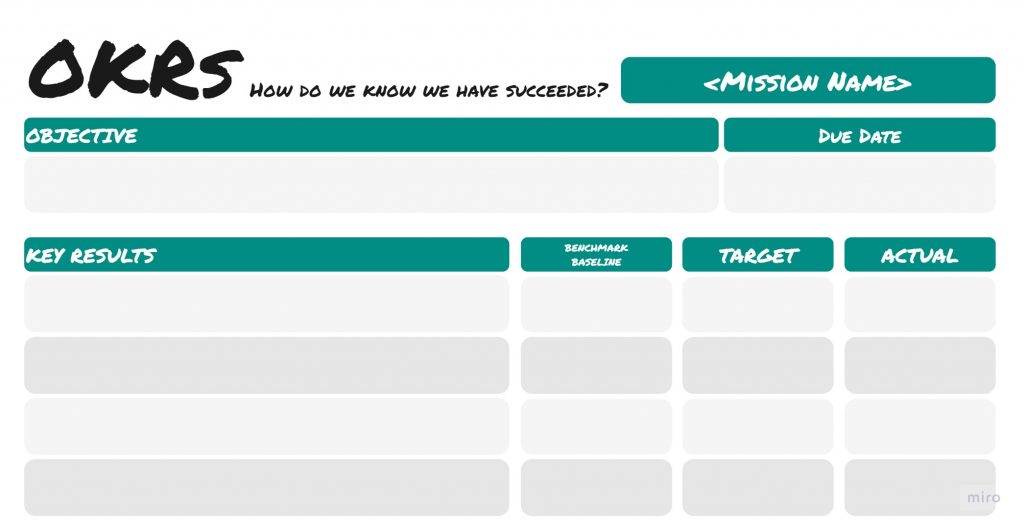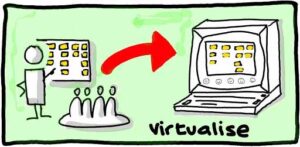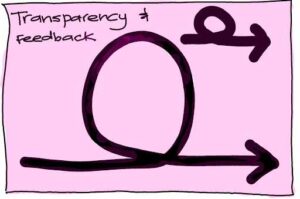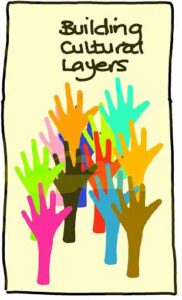 Back to Resources
Back to Resources
Resources | Remote Working
Recalibrate And Accelerate To Perform In The New Normal
Tips: Remote Working
-
13 minute read
-
6:30 minute video
The Problem
So, you finally got through shifting to remote working, lived the joys of getting the tech to work and everyone is busier than ever before, yet it feels like things are happening in slow motion. Working remotely has highlighted some gaps that technology can’t fix and you find yourself asking the question of “how can I improve performance, speed and agility across the board”?
Whether you like it or not, your operations are now taking place as a network of virtual teams where things like transparency, empowerment and psychological safety are the currency of operational high performance. Remote working is here to stay in some shape and making small adjustments will go a long way.
Without a recalibration of the way you manage work, your network of virtual teams and business is destined to stay in the SLOW LANE.
Whilst we have seen the more mature agile businesses make the remote working transition seamlessly this hasn’t been the case for others. Operating in this “New Normal” has seen performance drops for some teams in excess of 30% which is neither favourable nor sustainable.
The Challenges
Leaders, managers and teams are facing a multitude of remote working challenges leaving them feeling like they are in a never-ending loop of virtual “Whack-a-Mole”.
 Some of the challenges being faced include:
Some of the challenges being faced include:
• Technologies not working correctly or being inadequate
• Weak understanding of how to use tech correctly (often fearful)
• Flow/source of work has been disrupted
• Disengagement of people
• Increased demands and pressure to deliver (often under greater personal emotional loads)
• Teams, managers and leaders struggling to adapt quickly enough
• Managers and leaders trying to control things in a time of limited visibility and rapid change
• Emotions heightened for everyone
• Fear and the easier erosion of trust
The EPiC Solution
Our EPiC Recalibrate and Accelerate approach has been developed on the back of helping businesses and teams pivot, adapt and make the necessary adjustments to become more efficient and effective whilst working remotely. We have seen our approach enable both large and small teams to take on more purposeful work, focus on high-risk priorities and create innovative new ways to service their customers whilst maintaining operational discipline and avoiding burnout.
The EPiC Recalibrate and Accelerate approach is based on real-world experience that quickly delivers results. We provide high-impact support focused on quickly reestablishing connectedness, visibility of work and clear measures specifically for remote working.
This is done by…

Acknowledge where you are and orientate your efforts
It is easy to get caught up with activity over outcomes. Being busy is far different than being purposeful. But don’t fall to the natural tendency to try and control everything, you’ll become less responsive, stymie trust and cause frustration due to the constraints.
Clarity
Know your priorities and what you have capacity for. Does the work being done align to your organisational priorities in the current environment? If not, why are people spending time on it? Having the clarity on what you need to achieve allows a focus on what to rally behind.
• OKRs (Objective & Key Results)
○ Set
– Simply what significant, concrete, action-oriented, and (ideally) inspirational thing do you need to achieve – no more, no less (and across a period of time eg. 3 months)
– Start with a verb and if it’s more than a sentence it’s too long
– Less is more, stay flexible, dare to fail, be patient and be resolute
○ Track (regularly)
– How are you going to achieve it, what are the handful of ways you’ll know you got there?
– Be specific and time-bound (SMART metrics), aggressive yet realistic and unambiguous (it’s clear, either you achieved it or you didn’t)
– Know the current baseline and articulate what the target is
○ Review (almost as regularly)
– Ensure relevancy and understand progression
– OKRs are not a substitute for sound judgement, strong leadership, or a creative workplace culture
Virtualise
Whether it’s outside information overload, blending of work / non-work boundaries or dialing-in to back-to-back meetings for seemingly everything, we face enough challenges without creating more. Don’t just lift and shift bad habits to your virtual world. Choose tools that provide simplicity and appropriateness in whatever your new normal becomes rather than being obstacles.
• Asynchronous Communication
○ Tools that substitute for over the partition, deskside, kitchen conversations
○ They allow you to quickly, concisely talk at a time that suits the individuals
○ Also provides the medium for people to banter, be social and build bonds
○ Slack, GoogleChat, Teams, WhatsApp, etc…
• Video Conference Tools
○ Just under 60% of communication is body language, so seeing each other is vital. This may seem obvious but there are some companies currently attempting virtual working with only teleconferencing
○ Zoom, Hangouts, Teams, VideoFacilitator, etc…
• Collaboration Tools
○ Are you relying on scribes and notepads still? How are you sharing (and capturing) information, ideating and solving together in real-time?
○ Jamboard, Mural, Jira, Trello, etc…
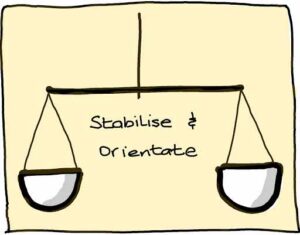
Stabilise & Orientate
Create some anchor points that establish rhythm and continuity amongst the potential uncertainty and change that exists.
• Establish cadence and norms (no matter who the team is)
○ Firstly what is the team’s purpose, what are they galvanising around? If teams struggle to articulate why they exist and are working together, how well are they going to do?
○ Having teams co-creating this narrative for themselves is far more powerful than having it imposed
○ How often are they getting together, why, on what and how are they coordinating, and with whom?
○ Develop lightweight learning cycles that actually fold improvements back into what you are doing, rather than just talk about (or gloss over) the problem
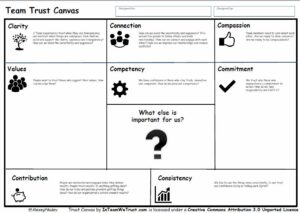
• Virtual Social Contracts
○ Working agreements of how teams, by the team, want to behave and what they want to hold each other accountable to
○ These start to elicit the team’s personality and begin to create a sense of identity
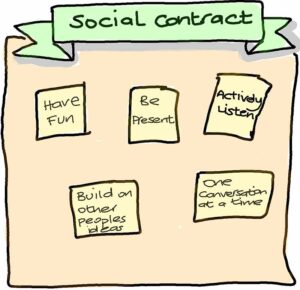
• Daily standups
○ Probably one of the simplest ways to create that regular heartbeat (but if done poorly can easily begin sucking the energy and soul from people)
○ Regular check-ins set context, help manage against shifting priorities, ensure transparency and that people’s time isn’t being wasted working on less important or deprioritised items
○ Typically occur daily (but ensure the cadence suits), at the same time and with the same core attendees
○ Allow time for social gathering, but timebox it and then have a clear start to the standup, keep on time
○ Be concise, what does the team need to know (or what do you need from them) and self regulate if anyone heads down those rabbit holes (breakout after for detailed discussions if needed)
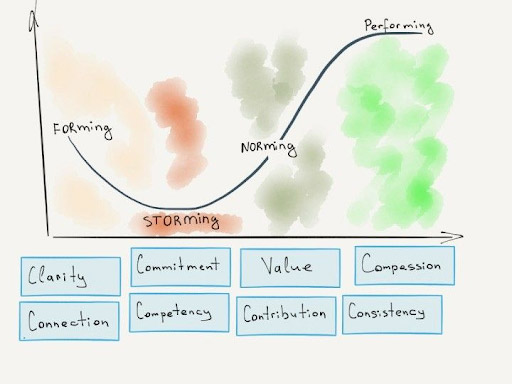
Volatility begins subsiding and reaction makes way for purposeful discovery
Working through upheaval requires a focus on the now, but also some longer-term thinking. Things are changing rapidly, however they may not present as only challenges for teams and organisations, but also as opportunities for them to evolve, innovate and to grow.

Purposeful Alignment
Understanding the direction you are heading is one thing (a good thing), but how are you creating the waypoints to navigate there and when needed (and they will be) to evolve and even pivot upon.
• Virtual Inceptions & Canvas
○ Focused, fast and lightweight elicitation of key dimensions of a concept to enable quick decisioning on whether and how to take it forward
○ Canvas provides detail on what it is (and isn’t), boundaries, what success looks like, why is it important, hypotheses, who is needed, how they’ll work
• Become Virtual Facilitators
○ There are massive variations of virtual meeting effectiveness at the moment, the key differentiator comes from the skill and preparation of the facilitator
○ Creating the environment for engagement and interaction is vital
○ What’s the purpose, is there clarity on outcomes and an understand from participants why they are there
○ How are you collaborating and visualising with the group
○ When things go wrong (and they will) what techniques and tools do you have in your pocket to get back on track
• The ‘Not Now’
○ Amongst such flux it’s hard not to just focus on the now. You may or may not be ready for it right now but other organisations will be, so create space for thinking and reimagining what will need to be (or could be) next
○ Ideation, future thinking and messages from the future enable active design of where you want to be and what you may need to do to get there
• Virtual Big Room Planning (VBRP)
○ Breaking the ‘busy with activity’ habit in organisations, to align what you should be doing with what you are able to do
○ Creating your quarterly roadmap from the ground up, rather than having it decided from top-down (and in doing so map dependencies, solve for impediments and create buy-in from the creation process in real time)
○ Be prepared, preparation for a virtual BRP will take up to 5 times longer than a BRP in person
○ Traditionally 1 or 2 days, so how do you modify virtual versions to be palatable and engaging?
○ Tooling: digital boards are essential for collaboration (teams and program level), capturing associated impediments, dependencies and managing risks, video conferencing at scale, utilisation of break out rooms
○ Facilitation and support: quite simply, get the best and enough – as great facilitation/support is the difference between just ok vs really meaningful outcomes
Transparency & Feedback
Conceptually straightforward but traditionally considered anything but in reality. Well, as we know reality has changed significantly and where internal motivations may not have existed previously, external forces are driving internal change. Whole businesses are rallying behind true organisation priorities, necessity is driving collaboration and for some systems their survival.
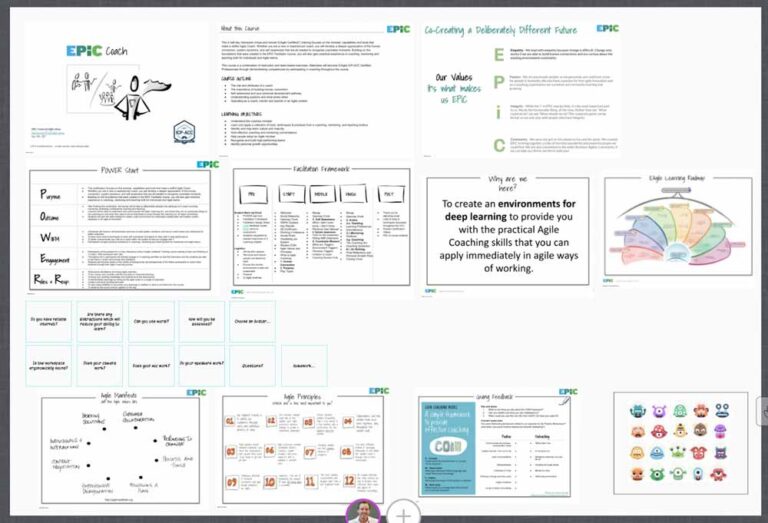
• Collaboration
○ How are you sharing your OKRs, results and progress; the work your teams is doing to bring priorities to market; organisational visibility of what’s being worked on across divisions, roadmaps, impediments and their solutions; how are you tracking based on cadence across teams, divisions and silos (this starts to build trust and form alignment)
○ For many virtualising was an enormous effort (which they never wish to repeat), but consider it a baseline and run experiments run with collaboration tools and what they may unlock for you
• Feedback and Learning loops
○ Team, division and organisational learning – it’s more than likely someone in your organisation has solved for that problem or done it before, if not, you are about to, so how are you going to share that knowledge (or is your organisation doomed to repeat it, again)
○ Retrospectives at all levels are the fastest and most effective ways to hear and solve for problems at the coal face, learn, improve and implement real change
○ Showcase what is being done for your true customers regularly so you can immediately adapt, update, evolve your offering to market demands based on feedback
○ Pulse checks (fist of 5 or NPS) within teams provide human connection and understanding of how people are going (be conscious this will change, weekly, daily and for some hourly). Of course, a level of trust is required within a group for honesty, so developing psychological safety is paramount
Building Cultural Layers
Creating trusting teams, and trust your teams. Developing psychological safety is key. (Simon Sinek, for one, provides great consumable narratives around these).
• Wellness
○ Take care of your people and of yourself. Acknowledging individual personal wellness needs in the current times must be number one for all organisations, leaders and teams
○ To give the best of ourselves at work, to colleagues and not to mention our loved ones, requires us all to be aware how we are all feeling day to day, week to week:
– Focus on what you can control
– Determine what re-energises you and draw upon it when needed
– Keep connected with colleagues, friends and family
– Be open, share and vulnerable when you feel safe to do so
– Create boundaries for work, family, working environment, your time
– Complete things both at work and home, learn and keep moving forward
• Investing in your people
○ Create space for your people to learn, grow, educate – you don’t want to come out the other side the same as you went in (it doesn’t have to be expensive, and will payback in multiples)
○ Allowing breathing space for people, innovation and discovery, especially at the moment, is one of the keys for accelerating as a business
○ People leadership / Agility leadership – it’s assumed that those in leadership positions know how to lead, do they, how? Great leadership at all levels really comes to the fore in our new normal
• Maintaining connection in a virtual world
○ Human connection and engagement is at the core of our society (as we are reminded of currently), so utilising seemingly simple techniques provide fantastic, highly consumable ways to develop this within teams virtually, examples could include:
– Treasure Hunts: bring back from in your house (insert items name) within a time limit
– Virtual coffees: share your coffee/tea break with someone and chat
– Tokens: grab an item that’s getting you through day, the week, represents your weekend, etc
– Virtual Drinks: doesn’t need to be Friday, but schedule some time in the week (that’s not after 5pm)
○ Taking this to the next level for organisations is Culture Hero, creating adaption and responsive environments that are not only sustainable but fun.
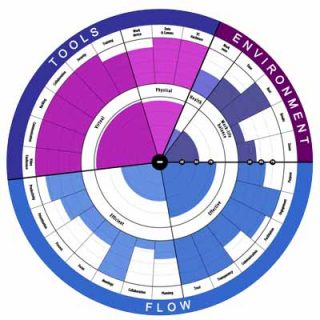
○ Allows understanding across multiple dimensions how you are going, provides data points, stakeholder feedback, and allows co-creation of actionable plans for those key areas you decide you want to improve, including:
– Team Radars
– Remote Working Radars
– Agile Leader Radars
– Business Agility Radars
Reach Out
We hope you find this information useful. If you need help or advice implementing the EPiC Recalibrate and Accelerate approach, please reach out to us: Contact Us
https://youtu.be/T0wJlYAB2p4





